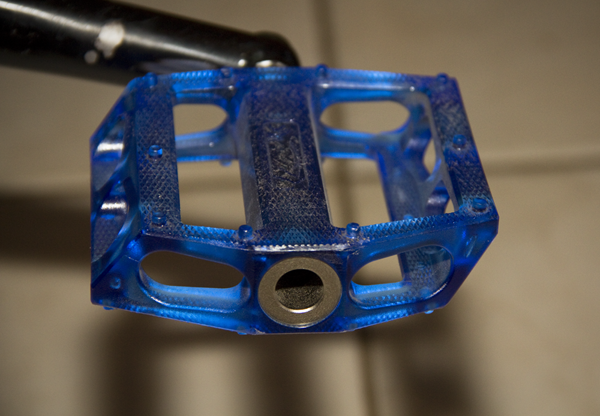
A few weeks back, we dropped an Insight with Animal Bikes where we talked about the new BPE pedals that became available just last week. Shortly after the Insight dropped, they sent through a sample pair for me to give a go. I decided with these just coming out, there’s probably a good number of you wondering if they’re worth picking up or just curious why these are more expensive than other plastic pedals out. Well, let’s check out what I thought and see if I can answer the questions on your mind.
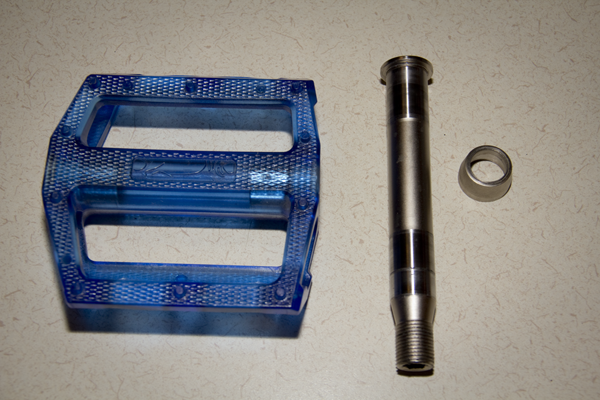
All right, so let’s start things out from the beginning. What exactly are the BPE pedals and what does BPE even stand for? The BPE pedals start out with injection molded plastic composite body that has 10 molded pins and extra knurling on each side of the body for grip. Inside, you can find two polymer spindle bushings and a 17m hollow chromoly spindle. BPE stands for “Best Pedal Ever”.
What makes these pedals different from other pedals already out? I think if you’re looking at the photo above it’s pretty self explanatory, but let me explain anyways. Most plastic pedals are made from the same style poly composite material, but it’s the internals that make these unique. The BPE pedals don’t have bearings. Similar to the Odyssey JC/PC pedals, Animal have utilized an oversized spindle for added strength, and in the process eliminated the need for bearings by dropping in two polymer spindle bushings that allow the pedal body to spin freely around the spindle. The BPE pedals also run in a 3-piece compression system which is unique to all other BMX pedals currently available.
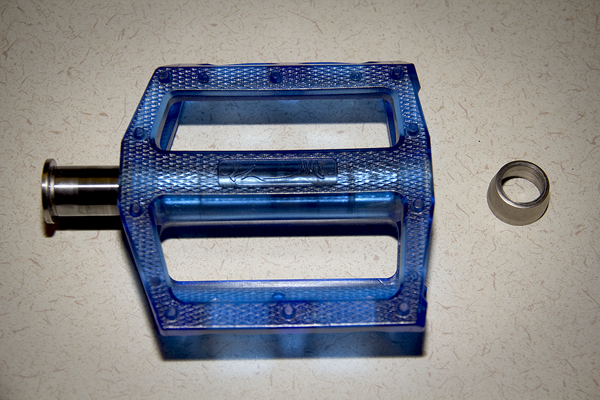
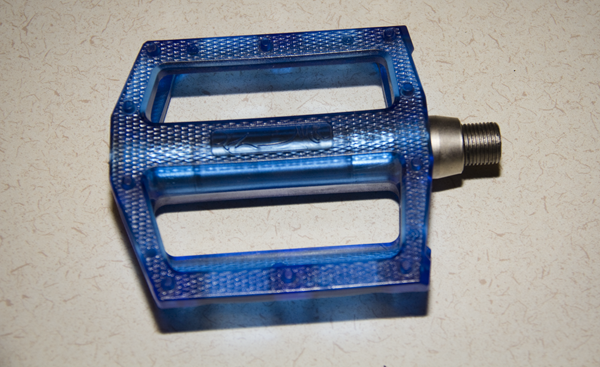
Putting the pedal together is pretty simple and straight forward, you slide the spindle in through the pedal body, then slide on the spacer that fills the gap between the pedal body and the pedal boss of the crank arm. Once you have that together you use a 6mm or 8mm allen key to tighten the pedal down on the crank arm. When you do this, the spindle pulls the pedal body and spacer together for a tight, wobble free fit.
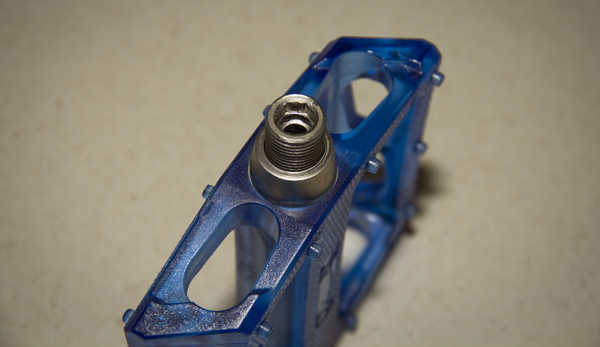
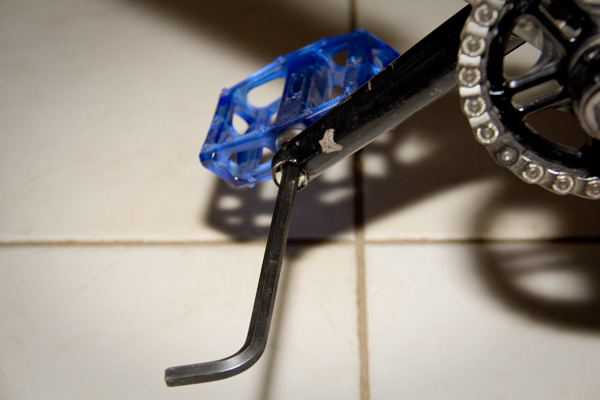
As you can see, the process is quick and all you need is an allen wrench to get the on to your bike. That was one thing I wondered about these. Will people understand how to put these together? I know it’s not rocket science or anything, but they have made it pretty much impossible to screw up.
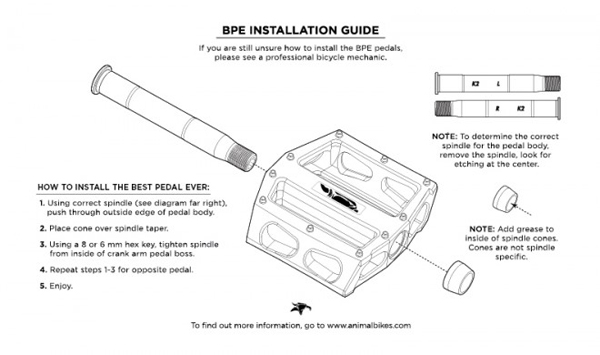
Still don’t get it? Here’s a diagram that Animal posted up!
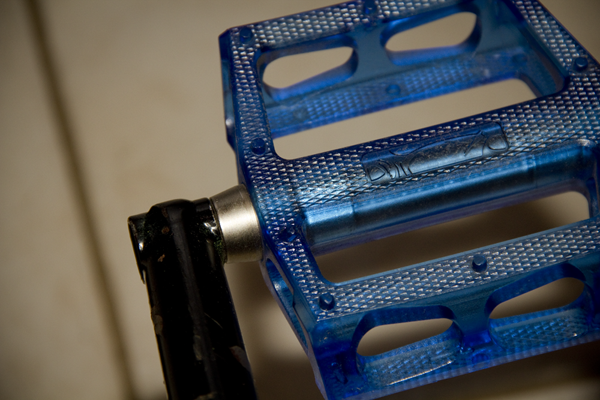
So what did I think? Well, like I said before these were simple to install and I personally was geeking out pretty hard on these since they aren’t like your typical BMX pedal. I think the last time I actually examined a pair of pedals to see how they actually work was the Odyssey JC/PC’s. I definitely like that Animal took a unique approach to doing a pedal versus just a cookie cutter plastic pedal with unsealed bearings and a standard spindle. Given, they do have the Hamilton pedals available with the regular spindle and unsealed bearings.
Prior to putting these on, I was running the metal and sealed version of the Hamilton pedals and to be honest, I really doubted that I would ever run a plastic pedal again. I always end up wearing through the pins and don’t like how after a week the bearings usually loosen up enough to the point where there’s some rattle or wobble. That and just the whole fear of slipping pedals from dust and water after those pins wear out is enough to scare me away.
I like that Animal will be selling replacement bodies for these so that if you wear down the pins you can order up some fresh ones. That’s a huge perk to these since I don’t mind running plastic pedals when the pins and body is still nice and grippy. I’ve honestly only been riding these at my local indoor park since, well, Minnesota winters are cold, snowy and pretty much not worth trying to ride outside until spring. The park is pretty clean, but there’s always going to be a bit of dust. I haven’t slipped the pedals yet and I’ve done a pretty good job of keeping all of the pins which is good. I’m sure come spring I’ll be having to order up some fresh bodies once I start riding outside again.
So here’s another big difference between these pedals and the rest of the PC pedals out there. These are for sale on Dan’s Comp for $44.99. Most plastic pedals retail for about $15.99, but I think it’s pretty clear as to why they’re more expensive. In all honesty, I like these ones a lot better than any of the other plastic pedals I’ve rode over the years too. Plus, these are still cheaper than the $60 – $100 you can spend on metal pedals.
The BPE pedals currently come in black, clear, clear blue (seen above), clear black, clear purple and clear red. The replacement bodies haven’t hit shops yet, but they will retail for about $10 when they do. UPDATED: The replacement bodies will be available at the end of March or early April.
Overall, I’m real stoked on these and I’d definitely recommend them to anyone who runs plastic pedals. Are they truely the “Best Pedal Ever”? Well, that’s really up to personal preference and who you ask. I know plastic isn’t for everyone, but it’s definitely an upgrade to what’s currently on the market. It’s definitely one of the best plastic pedals out in my opinion.
If you want to know more about these, check out the Insight where you can find out everything that went into making these happen.
To find out more about Animal Bikes and their products, check out their website — AnimalBikes.com
